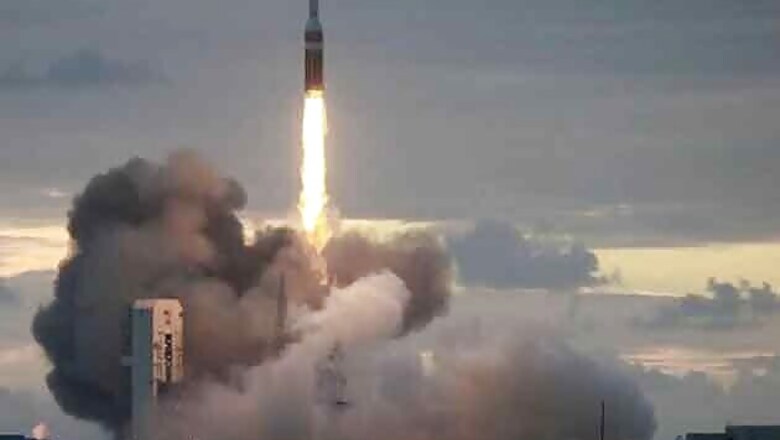
views
Cape Canaveral: A US spaceship designed to one day fly astronauts to Mars made a near-bullseye splashdown in the Pacific Ocean on Friday, wrapping up a flawless, unmanned debut test flight around Earth.
The Orion capsule blasted off aboard a Delta 4 Heavy rocket, the biggest in the US fleet, just after dawn from Cape Canaveral Air Force Station in Florida. Three hours later, it reached peak altitude of 3,604 miles (5,800 km) above the planet, a prelude to the most challenging part of the flight, a 20,000-mph (32,000 km/h) dive back into the atmosphere.
Orion survived a searing, plunge through the atmosphere, heating up to 4,000 degree Fahrenheit (2,200 degree Celsius) - twice as hot as molten lava - and experiencing gravitational forces eight times stronger than Earth's.
Over the next few minutes, a total of 11 parachutes deployed to slow Orion's descent, including three gigantic main chutes that guided the spaceship to a 20-mph (32 km/h) splashdown 630 miles (1,014 km) southwest of San Diego, California, at 11:29 a.m. EST (1629 GMT).
"I think it's a big day for the world, for people who know and like space," NASA Administrator Charles Bolden said before the launch.
The point of the test flight, which cost NASA about $375 million, was to verify that Orion's 16.5-foot (5-meter) diameter heat shield, parachutes, avionics and other equipment would work as designed prior to astronauts flying aboard.
NASA has been developing Orion, along with a new heavy-lift rocket, for more than eight years. The design of the rocket has changed, and Orion survived the cancellation of a lunar exploration program called Constellation to become the centerpiece of a new human space initiative intended to one day fly astronauts to Mars.
NASA has spent more than $9 billion developing the Lockheed Martin Corp-built Orion, which will make a second test flight, also without crew, in about four years.
A third mission, expected around 2021, will include two astronauts on a flight that will send the capsule high around the moon. Since the end of the Apollo moon program in 1972, astronauts have flown only a few hundred miles above Earth.
Orion's debut flight originally had been slated for Thursday but a problem with the rocket, built and flown by United Launch Alliance, a partnership of Lockheed and Boeing Co, delayed the launch one day.



















Comments
0 comment